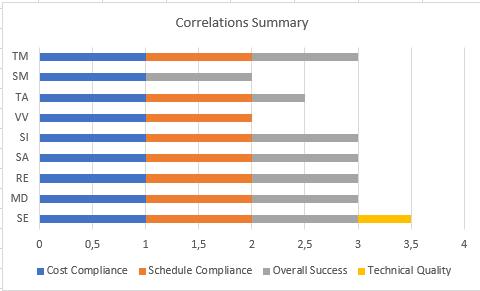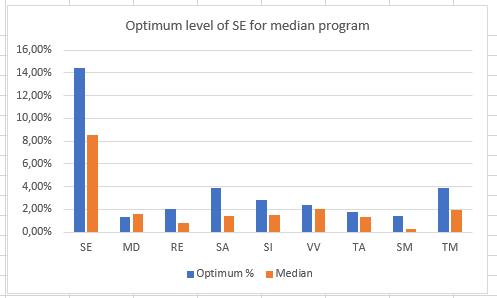
7 minute read
By Wioletta Kowalczyk
Overview of a Systems Engineering ROI Thesis by E. Honour By Wioletta Kowalczyk Overview of a Systems Engineering ROI Thesis by E. Honour
by Wioletta Kowalczyk BSc BS MS (PPI)
Email: wkowalczyk@ppi-int.com
Copyright ©2021 Project Performance International. All rights reserved. Authored for PPI SyEN
This short paper overviews a PhD thesis written by Eric C. Honour of research conducted by the author at the University of South Australia [1]. The thesis aims to provide a fresh perspective and overview of the topic of systems engineering (SE) return on investment (ROI).
The main goals of the research were to determine the degree of the correlation between systems engineering activities and program/project success, and to calculate the optimum amount and type of systems engineering activities based on a definable parameters of a program/project.
As a result of detailed ontology work, the author has provided his detailed definitions for eight main SE activities.
• Total SE (SE) is considered as total effort expended across the eight system level activities defined below.
• Mission/purpose Definition (MD) is a starting point for creating a new system or modifying an existing one. The artifacts created during this activity use system users’ language, rather than technical language. • Requirements Engineering (RE) is a core activity for the systems engineering discipline. According to the author, RE encompass requirements creation, management and definition of the system capabilities, characteristics and quality factors. • System Architecture (SA) is the design aspect of the SE activities including the definition of a system in terms of its components and their relationships. • System Integration (SI) is the next system-level activity that occurs after detailed activity of design, purchase, creation and testing of system components. • Verification and Validation (VV) is defined by the author as the comparison of a system or developmental artifact with its requirements through the use of specific methods: inspection, analysis, demonstration, test or other. • Technical Analysis (TA) is defined as the assessment of system performance against the requirements. • Scope Management (SM) is area of SE activity that focuses on the contractual relationships with clients and subcontractors.
• Technical Leadership/Management (TM) is said to be an asset for every “systems engineer” and is defined to include the abilities of project planning, technical progress assessment, technical control, team leadership, inter-discipline coordination, risk and interface management.
The researcher over a 3 year period interviewed staff of several companies and programs/projects, in order to understand the key thesis questions by determining the following factors in each program/project: types and amounts of SE activities used in the program/project, level of success of the program/project, and program/project characterization parameters. The minimum number of programs/projects needed for adequate accuracy of correlation was calculated by the researcher to be 43.
The thesis provides an additional perspective on SE ROI, building upon previous studies that were mainly anecdotal in nature. These previous works indicate underlying trends that support the possibility of calculating SE ROI. The earlier studies referred to in the thesis are a Boundary management study (Ancona 1980s), NASA project definition (Gruhl 1992), Impact of SE on quality and schedule (Frantz 1995), Large engineering projects study (Miller 2000), a landmark SEI study (Elm et al 2008) [2] and many other studies including INCOSE research on the impact of SE on the development of complex systems. The thesis does not embrace a later, substantial SEI study conducted in a similar timeframe to the research conducted by the author [3]. The research itself reported on in the thesis was designed in a careful and well thought out manner, defining main research questions (RQA and RQB), definitions of terms that were used subsequently, activities to be performed within the scope of the research, ethics considerations, observations and findings analyses. The research focused on collecting the basic types of data in order to answer questions: 1. RQA: Is there a quantifiable correlation between the amount, types and quality of systems engineering efforts used during a program/project and the success of the program/project? 2. RQB: For given program/project, can an optimum amount, type and quality of systems engineering effort be predicted from the quantified correlations? First step in the research was to gather data on program/project success, measured in cost, schedule, and technical quality, these combined into an overall success measure. Second was to understand and gather the data on systems engineering effort, measured in SE effort costs in each of the eight SE activity categories against the program/project total cost. Third was to gather data for program/project characterization (size, complexity, quality) to parameterize the expected correlation of systems engineering effort with program/project success.

The thoroughly developed model and data set were used in statistical modeling to answer the two questions. The main conclusions were: • all of the defined SE activities exhibited a significant positive correlation with cost compliance, • all of the defined SE activities except Scope Management exhibited a significant positive correlation with schedule compliance, • all of the defined SE activities (except Mission/purpose Definition, Verification and Validation, and
Technical Analysis) exhibited a significant correlation with overall success, • none of the defined SE activities exhibited a significant correlation with technical quality. Therefore, one can conclude that there is a quantifiable relationship between systems engineering effort and program/project success. This finding serves as a caution to programs/projects, meaning that the level of SE effort matters to the likely success of the program/project, as does the mix of that effort across the constituent activities of SE. As defined below, the SE activities have a significant and quantifiable ROI. No correlation though, was found between the SE effort and system technical quality. It was determined that there is an optimum amount of SE activities for highest program/project success, and programs/projects typically use less SE effort than is optimum. A method of calculation is provided in the thesis for the optimum. Values are provided in this synopsis. For estimation of SE effort, some program/project characterization parameters were found to be of much greater importance than others. This finding shows that when estimating program/project SE effort it is advisable to particularly focus on level of definition at start, development autonomy, level of integration, system size etc. as the most on the important program/project factors. One of the SE factors, Technical leadership/management (TM), was shown to be unique in providing optimum program/project success simultaneously in cost, schedule and stakeholder satisfaction. The research concluded that there is a quantifiable relationship between levels of systems engineering effort and program/project success demonstrated by high correlation coefficients, well in excess of test values for significance level of 0.05. The research showed that the ROI for SE effort can be as high as 7:1 for programs/projects expending little to no SE effort. For programs/projects expending median level of SE effort, the ROI was 3.5:1. The major finding of the research was that the optimum amount of SE can be predicted based on all nine hypotheses (the hypotheses relating to total SE and the eight individual SE activities). The evidence was achieved by selecting a prediction methodology for optimum levels of SE activities, then demonstrating that the bounds on the selected methodology proved false the null hypotheses.

As stated previously, the research concluded that there is an optimum amount of systems engineering effort for maximum program/project success. For a program/project of median characterization parameters, the optimum is 14.4% of the total program/project cost. Examples of use of the estimating method were provided for space system development (optimum level of total SE 15.6%) and airborne training system development (optimum level of total SE 13.2%). In summary, the research concluded that a method for estimation is available to determine the optimal levels of SE effort for a given set of program/project characterization parameters. Variation in the program characterization changed the optimum within the range 8% to 19% of total program/project cost.
[1] Systems engineering return on investment by Eric C. Honour BSSE MSEE, A thesis submitted for the degree of Doctor of Philosophy, Defence and Systems Institute, School of Electrical and Information
Engineering, University of South Australia, January 2013
Available online at: http://www.hcode.com/seroi/documents/SE-ROI%20Thesis-distrib.pdf [2] Elm, J, et al. (2008). A Survey of Systems Engineering Effectiveness. Special Report CMU/SEI-2008-SR-034.
Pittsburgh, PA, USA: Carnegie Mellon Software Engineering Institute. [3] Elm & Goldenson (2012). The Business Case for Systems Engineering Study: Results of the Systems
Engineering Effectiveness Survey. Special Report CMU/SEI-2012-SR-009. Pittsburgh, PA, USA: Carnegie
Mellon Software Engineering Institute.





